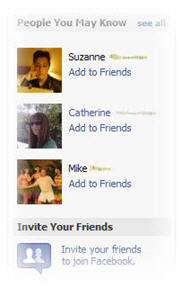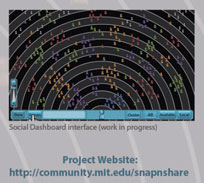Clippinger turns to Robin Dunbar and colleagues to show that there is a correlation of neocortex development (thinking and problem solving) and membership size in social groups.
…the evolutionary success of Homo sapiens can in large measure be attributed to its ability to manage complex social relationships.
Page 57 from A Crowd of One
Clippinger pulls a great passage from Dunbar that describes the notion that what challenges an individual animal is tracking the societal groups in which it partakes. Dunbar then offers another view that maybe it is not the quantity, but the quality of the relationships. The following page explores the famous statistic that people successfully organize informally at groups of 150-200.
This book continues to have botox on the brain moments with the occasional brilliant series of pages. It is as if Clippinger started with a fantastic 80-page paper that inflated to fill a book. Regardless, the gems make you want to commit concept to memory.
One behavior that continues is the incessant friending activity on social sites, regardless of the site’s purpose. Sites even suggest other people you might know and connect. As interconnections grow, the network inherently diminishes in quality. The notion of identifying a connection with another person, community or organization is a simple enough activity. Maybe adding the need to classify those connections beyond a binary state was an inhibitor to adoption. Was this something FaceBook noticed, or was it simply that the creators never had higher intentions?
Moving beyond high-level classification, the next useful articulation is quality – how connected are we? There is plenty of work and math that can analyze these issues, however it all presumes having access to the data. Moreover, are my behaviors in online social spaces reflective of connected I am to my network? The data analysis is inherently reliant on the accuracy and relevance of the data. Might I love someone dearly that I hardly interact with online? Again, this level of analysis introduces yet another step to organizing our view of the societal graph and might be prohibitive to adoption.
On a related but separate note, some interesting user experience work is being done in the MIT Media Lab around visualizing and managing the adhoc face-to-face social network. Check out the project called Snap N’ Share by Nadav Aharony, Andrew Lippman and David Reed.
This brings us back to the point that humans are able to execute each of these tasks – identification, classification and qualification – without trouble. Short of disease, it is safe to assume that forgotten people accurately reflects their status on our societal radar. The hope of the articulated social graph being leveraged by technology is that maybe we will finally see what we are missing.
What is beautiful about the notion that humans have been so successful because of our ability to manage relationships is that it is startlingly not about being an individual. At an individual level, it is the quality of the relationships we create, but it is the group that benefits. What would we even do with an optimized view of society and is that discussion really absent from society?
The success of social spaces rests in their ability to create and support meaningful relationships. The proliferation of week ties in the social graph is noise in what could be a high fidelity signal. In the end, meaning is embodied in the people and the technology is just an enabler. What might these spaces be like if the only goal was to support meaningful connections?


